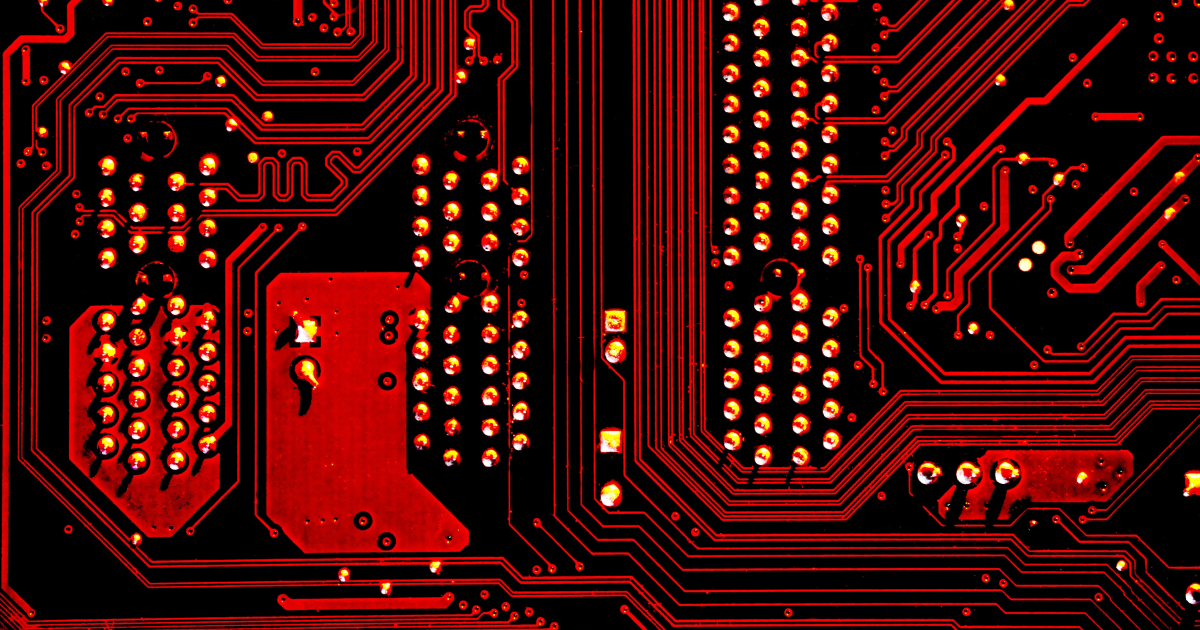Navigating numerous hardware constraints is one of the most pressing challenges for tech teams developing connected devices. From power efficiency and battery life optimization to connectivity options and environmental adaptability, there’s much to think about when working on an IoT project.
In this article, we dive deeper into the main hardware challenges and constraints for connected devices and explore how they impact the development process. Let’s get started!
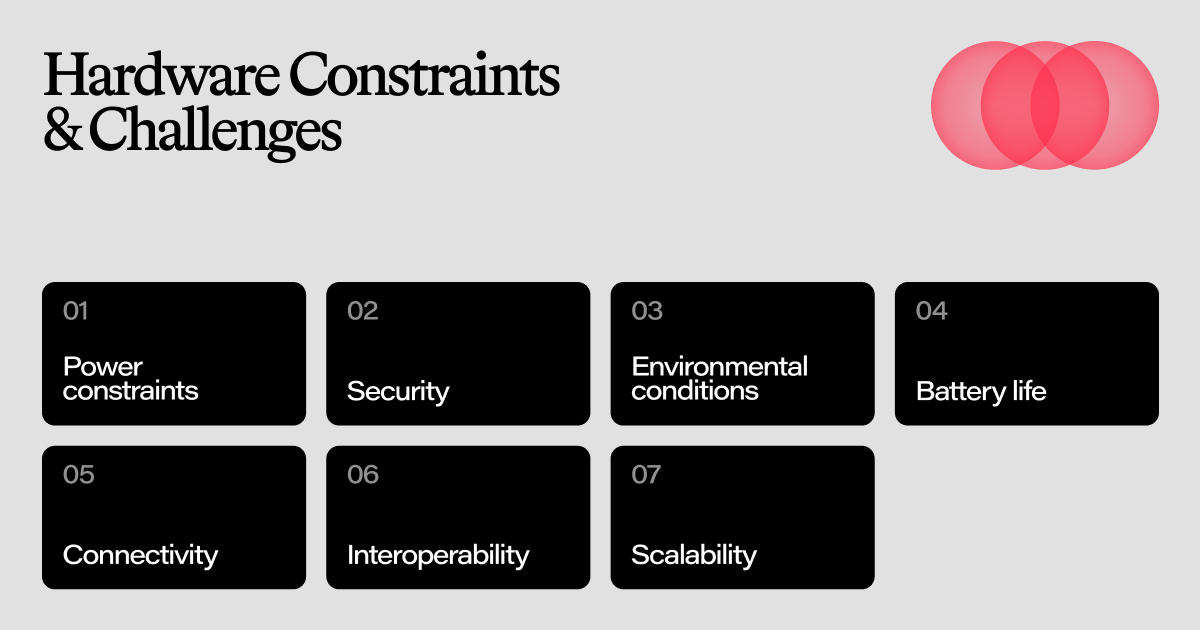
1. Power constraints
The challenge with power constraints lies in balancing the need for power-hungry components with the limited capacity of the batteries inside such devices; the trick is to save as much as much energy as possible each time the data coming from the sensors is read and processed.
To address this, vendors try to squeeze the silicon as much as possible to save energy that could escape through a leakage, fault in the hardware itself, etc. On the development side, hardware engineers need to initiate the design process by calculating power consumption, considering both average and maximum levels.
Functionality vs power efficiency
One of the main decisions that needs to be made here revolves around whether to increase battery capacity or remove some components from the board, helping to save energy.
It’s all about striking a delicate balance between functionality and power efficiency, which involves deciding which components will be part of the circuit board. By reviewing the data sheets of these components, we identify their worst-case power consumption scenarios
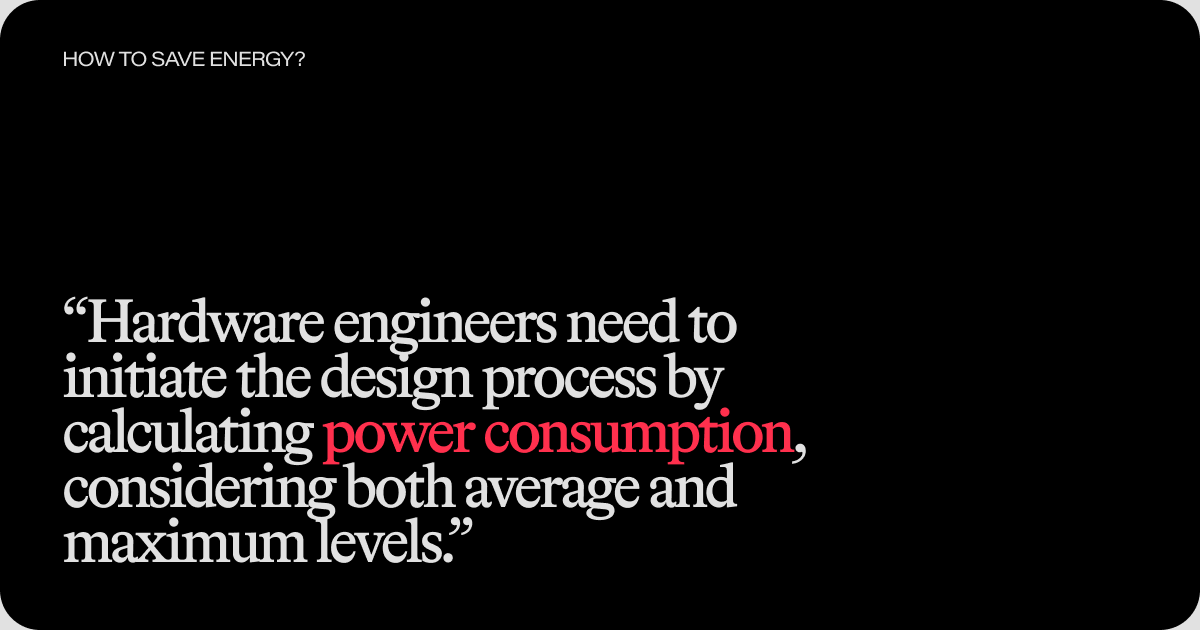
We then compile this information, accounting for the highest possible power usage in each case. The goal is to estimate the total power required from the battery.
It's worth mentioning that in later stages of development, there might still be a possibility to optimize power usage. Not all components need to be active at the same time – by selectively enabling and disabling components based on operational needs, the average power consumption can be reduced.
However, in the initial calculations, we have to determine the sum of the maximum current consumption; in the case that the current usage surpasses the capacity of our battery, we should look for ways to save energy.
2. Ensuring security
While security is paramount in IoT devices, there’s a challenge hardware engineers have to face: how to compromise between robust security measures and cost-effectiveness?
Increasing security most often means the device is going to cost more, and might not attract customers as a result. This is why we need to have the price of the final product in mind and adjust the security level accordingly.
That said, critical safety concerns demand thoughtful consideration, particularly in scenarios where devices interface with the human body or pose potential risks. Low voltage options and protective measures against electrostatic energy become crucial considerations.
Read more about the security of embedded devices here >>
3. Environmental Conditions
IoT devices, especially those operating in harsh environments, must be optimized for factors like temperature, humidity, and electrostatic energy.
Waterproof enclosures are essential for wearables exposed to water or physical activity. The same rule goes for any home devices that are mounted on the outside of the house.
When it comes to temperature, the most important concern regards lithium batteries, as (for most of them) 50 °C is the maximum temperature they can operate in.
That means having to think of safety features if, for example, the device is going to be exposed to the sun and manage the temperature inside the device. Temperature sensors can be placed inside the device to make the customer aware that we have to get this device out of the sun to save it from overheating.
4. Battery Life Optimization
Extending the battery life of connected devices depends primarily on the battery type. Lithium batteries don’t do well in negative temperatures, so when the device needs to operate below 0 degrees, the capacity of the battery decreases dramatically.
Zink batteries could be used as a great option for negative temperatures, but it’s a single-use scenario – the battery cannot be charged. The choice of battery needs to depend on how the device will be used.
Battery life can, for example, be increased by adding supercapacitors to the board. Solar panels can also be used to help the battery survive during the day and recharge a bit for night use.
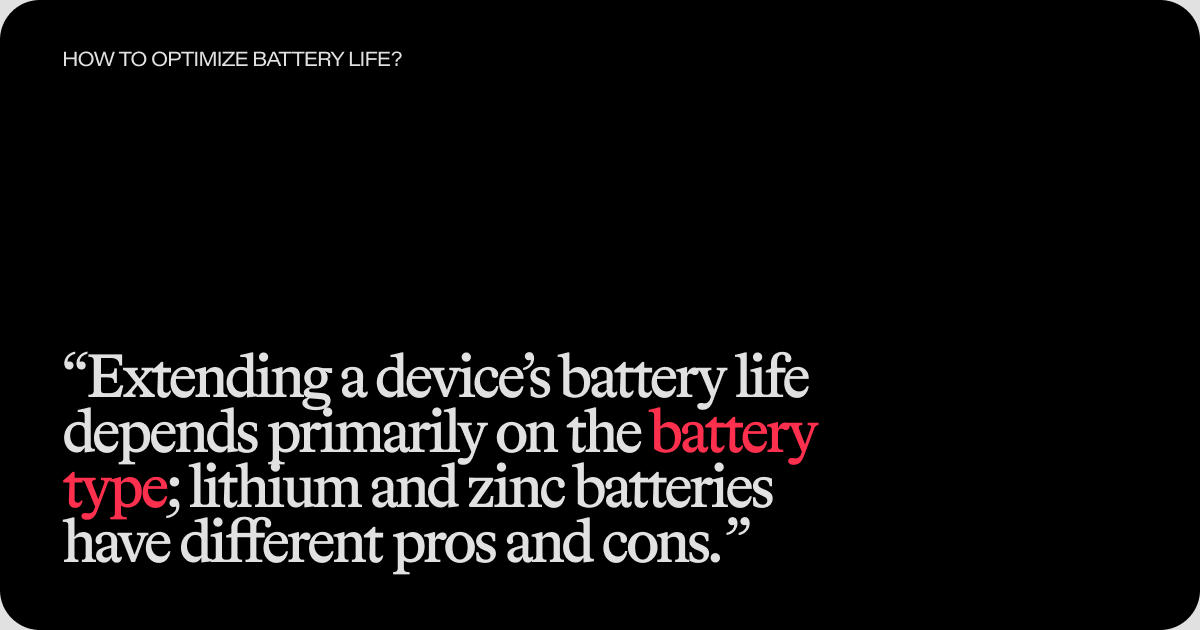
An additional thing to take into consideration is estimating how many cycles the battery should survive for the device. For devices such as smartwatches, it’s usually ten thousand, but for some industrial devices that need to survive over 5 years and are charged day by day, the number of charging cycles should be higher.
Keep in mind that the number of charging cycles will also have an impact on the price of the battery.
5. Connectivity
Connectivity in IoT devices involves a careful trade-off between communication speed and energy efficiency. Fast communication methods like LTE can drain batteries quickly and make up for additional costs.
In contrast, low-power options such as Bluetooth or Zigbee conserve energy but offer limited data transfer rates. Strategic decisions must consider the device's intended use and energy constraints, aligning connectivity choices with optimal performance.
6. Interoperability: hardware compatibility and standardization
Achieving interoperability in an IoT ecosystem demands compliance with certification standards, such as CE in the European Union and FCC in the United States.
Hardware engineers must consider the specifications of different markets and design devices that can pass tests related to RF emissions, mechanical durability, and electrical safety.
As hardware compatibility and standardization become key elements in ensuring seamless integration and functionality, it’s important to think about the specifics of the targeted market as soon as at the design stage.
7. Scalability: preparing for the future
Scalability is a critical consideration in IoT hardware design, especially for projects expected to grow over time.
Keeping in mind any ideas for increasing parameters like calculation power or lifetime, hardware engineers must plan for scalability during the initial design phase. Choosing components with longer lifetimes and designing modular architectures enable smoother transitions and reduce the costs associated with redesigning devices.
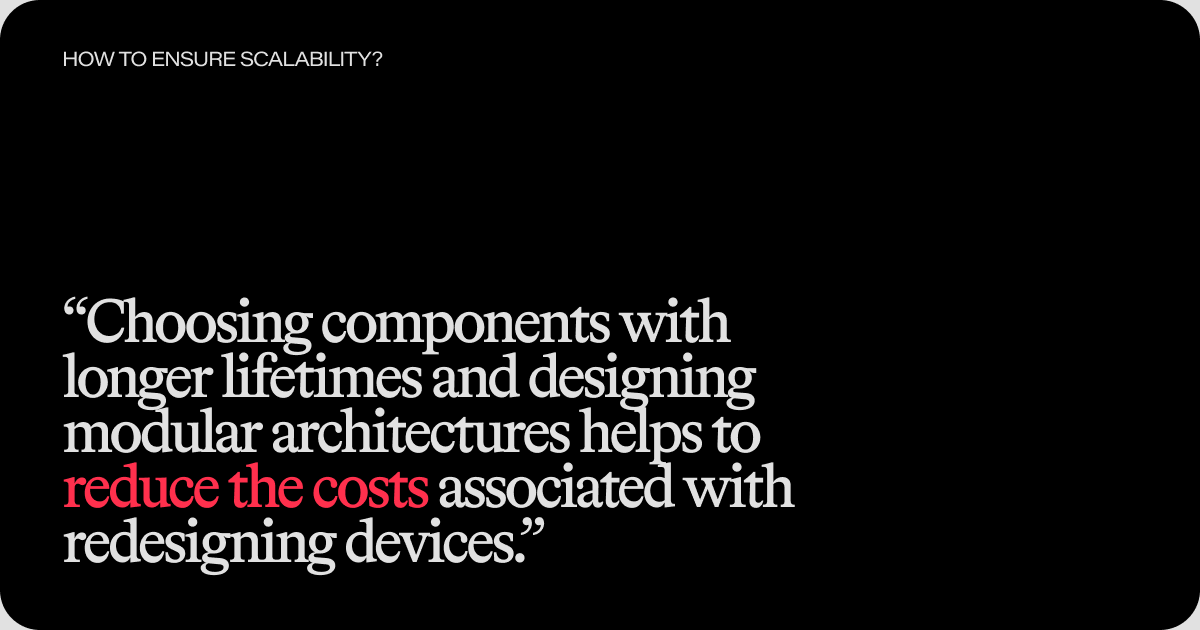
It's better to choose the components which have a longer lifetime – like 10 years, or even 15 years. These components are more expensive than those meant to last for only three years, for example, but if the plan is to sell a given device for a decade, then it’s wiser to choose them.
Conclusion
Power efficiency, environmental adaptability, security, connectivity options, data processing strategies, battery life optimization, interoperability, and scalability all play crucial roles in shaping the trajectory of IoT hardware design.
By carefully balancing these factors, engineers can create innovative and sustainable connected devices that integrate with our modern world.
Looking for a hardware team to help design your connected device? Contact us; we have years of experience working with IoT projects from ideation right to product launch.

Przemysław Łagód
Head of Hardware
